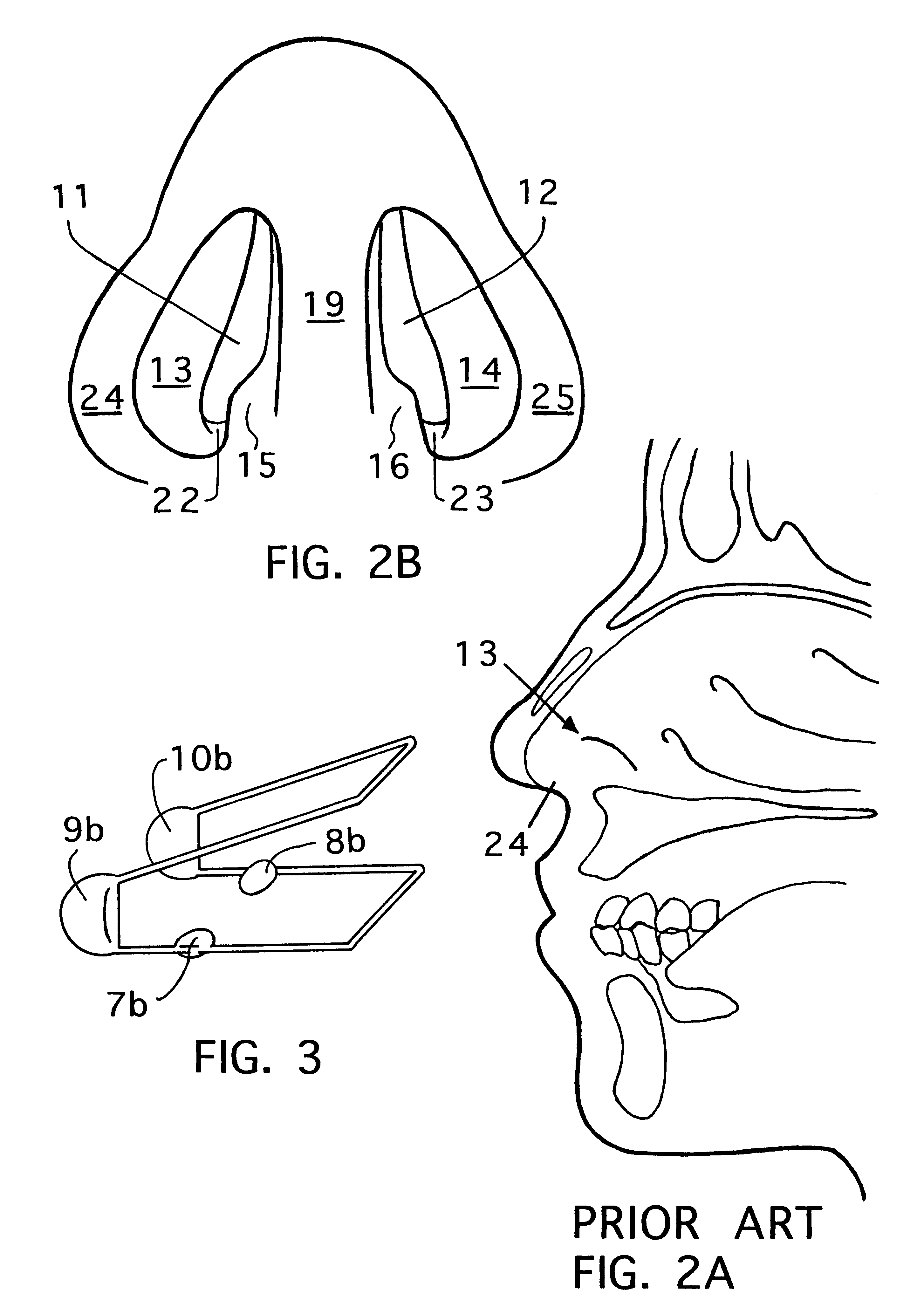Internal nasal dilator
a nasal dilator and nasal tube technology, applied in the field of nasal dilators, can solve the problems of nasal strips falling back in the throat, breathing through the mouth, collapse of nasal walls, etc., and achieve the effect of reducing the discomfort of removal of strips
- Summary
- Abstract
- Description
- Claims
- Application Information
AI Technical Summary
Benefits of technology
Problems solved by technology
Method used
Image
Examples
Embodiment Construction
1. Breathing Obstructions--The Close of the Nose
Modern breathing problems include breathing while awake, snoring, and sinus problems. My nasal insert relates more to the first two. More specifically, my nasal insert supports the specific area of tissue or cartilage that closes the nose.
The airways (11 and 12 in FIG.2B) are visibly narrow. My nasal insert supports the nose open at its most narrow and most collapsible area: the nose's limen nasi ridges (13 and 14 in FIG. 2B, and 13 in FIG. 2A). The original function of the limen nasi ridges might well have been to seal the nose (from dust storms or water when swimming) by tensing one's nasal muscles. Modern humans rarely have a need for this function. Nowadays weakened nasal cartilage, like from injury or cosmetic surgery, appears to allow these ridges to close the nasal airway during normal breathing. Also, during sleep, relaxed nasal muscles and mucus-clogged vestibule hairs appear to allow these ridges to close the nasal airway.
Exa...
PUM
 Login to View More
Login to View More Abstract
Description
Claims
Application Information
 Login to View More
Login to View More - R&D
- Intellectual Property
- Life Sciences
- Materials
- Tech Scout
- Unparalleled Data Quality
- Higher Quality Content
- 60% Fewer Hallucinations
Browse by: Latest US Patents, China's latest patents, Technical Efficacy Thesaurus, Application Domain, Technology Topic, Popular Technical Reports.
© 2025 PatSnap. All rights reserved.Legal|Privacy policy|Modern Slavery Act Transparency Statement|Sitemap|About US| Contact US: help@patsnap.com



